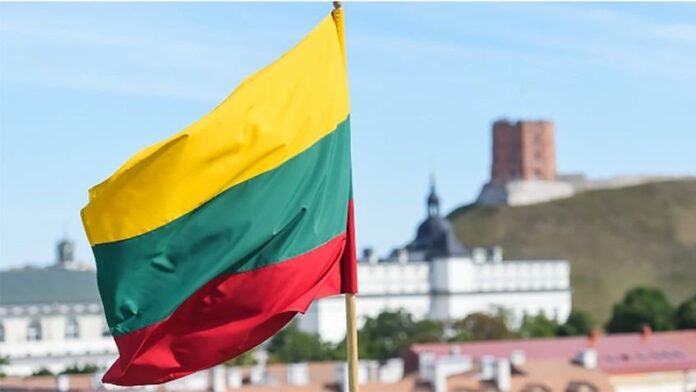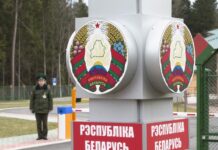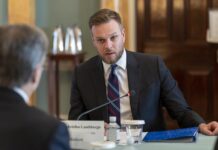
Reflections on the Lithuanian nation’s uncertain beginnings
First, a quick review. In the 1230s, Lithuanian lands were united by Mindaugas, founding the Kingdom of Lithuania on 6 July 1253. In the 14th century, the Grand Duchy of Lithuania was the largest country in Europe and included present-day Lithuania, Belarus, Ukraine, and parts of Poland and Russia. The Crown of the Kingdom of Poland and the Grand Duchy of Lithuania were in a de facto personal union from 1386 with the marriage of the Polish queen Jadvyga and Lithuania’s Grand Duke Jogaila, who was crowned King of Poland. The Commonwealth of Poland and Lithuania was established by the Union of Lublin in July 1569. It lasted more than two centuries, until neighbouring countries dismantled it in 1772–1795, with the Russian Empire annexing most of Lithuania’s territory. As World War I ended, Lithuania’s Act of Independence was signed on February 16, 1918, founding the modern Republic of Lithuania. The date is celebrated every year as the nation’s birthday.
On the website bernardinai.lt, historian Mingailė Jurkutė published some interesting facts on the aftermath of the declaration of indpendence. It seems the path was not an easy one.

Trouble began the day after the declaration. On February 17th, a group of women activists gathered for a protest demonstration. The Council had not invited any female representatives as its members, although Lithuanian leaders had been encouraging women’s political awareness. The demonstration was quickly followed up by a petition signed with 20,000 authentic signatures.
The world was apparently not impressed by the Declaration, and congratulations were not forthcoming. The newly-minted Lithuanian citizens were also not overly enthusiastic to volunteer for the country’s defense. So in June of that year, idealistic slogans gave way to concrete land reforms with first choice going to military personnel.
Circumstances were also such that other basic principles laid out in the Declaration could not be enacted right away. The idea of a democratic republic with its capital Vilnius stayed on paper, as the following February saw Vilnius named the capital of “Litbelo”, a Communist concoction combining Lithuania and Belarus. Later it was the puppet capital taken over by Poland. By 1926 the Constitution was further cast into shadow as Lithuania became a “velvet autocracy”, writes Jurkutė. The interwar miracle of modernization did not reach everyone – she cites a famous example of abject poverty — the “Brazilka” (similar to Brazil’s favelas) district in Kaunas, where people slept in shacks on the slope of Žaliakalnis.
The tricolour flag was not firmly established, due to its lack of conformity with heraldic protocols. However, women did win the right to vote, and Lithuania was among the first nations to grant it. Although the loss of Vilnius closed off land routes to the rest of Europe, the port city of Klaipėda became the new export centre, and the temporary capital of Kaunas became a modern city and a pearl of art deco architecture that is now being submitted for consideration as a UNESCO world heritage site.
On the eve of the second February 16, things were still not particularly hopeful. Eight partisan leaders met in a tiny bunker to write a declaration that Lithuania must be free, and outlined a program for land reform and social justice. Lithuanian compatriots in the West did manage to win de jure non-recognition of the annexation of Lithuania, but actual freedom came decades later in the form of Sąjūdis (The Freedom Movement) inspired by the partisans and dissidents.
In Jurkutė’s view, all of those people fought for a different Lithuania than the one that rose from the ashes. It faced a constant barrage of unforseen challenges, brought about by the complexities of modern life. But in fact, that was the Lithuania envisioned by the signatories of the declaration of February 16 – a never-ending project fraught with tension and a multiplicity of opinions, but a project with no bounds. A project whose form, decisions and achievements are endlessly various, yet whose outcome is well-being, ultimately resulting in the freedom to choose.
The first generation of February 16th was both creative and bold, a generation of calculating, risk-taking fighters and workers. When everything that was Lithuania was reduced to a mere shell, February 16th was the one thing left, the nation’s anchor even in the darkest times.
Much was forgotten during the Soviet era, but February 16th was always a worry for those in charge, with tricolor flags sprouting up overnight, and anonymous patriotic declarations appearing in schools.
February 16th is the date of freedom, binding us to a deep and extraordinary past. The future also holds the potential of being extraordinary, and we should not fear it.
Adapted from bernardinai.lt





























